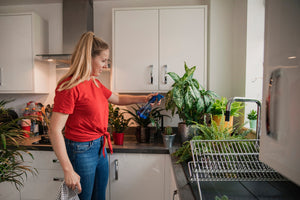Five Things to Consider When Choosing a House Plant
Bringing greenery indoors not only adds aesthetic appeal but also promotes a healthier living environment. However, choosing the right plant involves more than just picking one that catches your eye. From assessing your home's environment to understanding the needs of different plant species, there are several factors to consider to ensure your houseplants thrive. In this blog, we'll explore five essential considerations that will help you select the ideal houseplant for your space, allowing you to cultivate a beautiful and thriving indoor garden. Whether you're a seasoned plant parent or a beginner looking to bring some greenery into your home, this guide has you covered.


1. Assess Your Environment
Before selecting a houseplant, evaluate your surroundings. Consider factors like humidity levels, duration of winters, and overall climate conditions to ensure the chosen plant thrives in its new home.
2. Lighting Requirements
Determine where your plant will be placed and the amount of sunlight it will receive. Different plants have varying light preferences, so whether it's an east-facing window or a spot with indirect sunlight, select plants that match your available light conditions.
3. Pot Selection
Choose the right type of pot for your plant. Terracotta pots are ideal for succulents and cacti due to their porous nature, promoting proper drainage. Plastic drainage pots are suitable for maintaining root health and growth, allowing you to gauge when it's time for repotting.
4. Watering Practices
Understand the watering needs of your plant species and avoid overwatering or underwatering. Use the finger test to assess soil moisture levels and opt for room temperature water to prevent shocking the roots. Additionally, ensure proper drainage to prevent root rot.
5. Pay Attention to Plant Signals
Pay attention to your plant's cues to address its specific care requirements. Drooping leaves may indicate a need for water, while squishy foliage in plants like aloe suggests overwatering. By observing and responding to these signals, you can provide tailored care for your houseplants.








